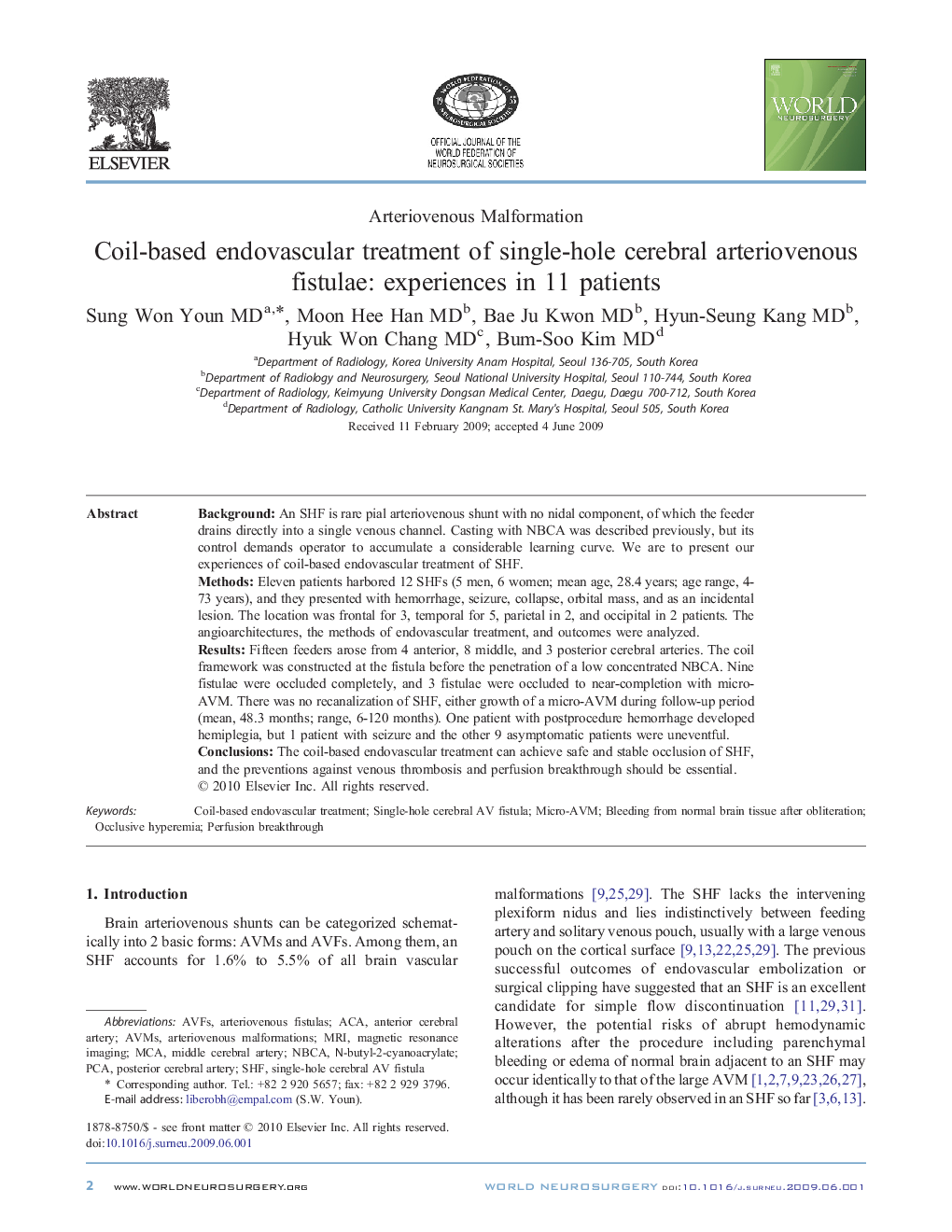| Article ID | Journal | Published Year | Pages | File Type |
|---|---|---|---|---|
| 3097817 | World Neurosurgery | 2010 | 9 Pages |
BackgroundAn SHF is rare pial arteriovenous shunt with no nidal component, of which the feeder drains directly into a single venous channel. Casting with NBCA was described previously, but its control demands operator to accumulate a considerable learning curve. We are to present our experiences of coil-based endovascular treatment of SHF.MethodsEleven patients harbored 12 SHFs (5 men, 6 women; mean age, 28.4 years; age range, 4-73 years), and they presented with hemorrhage, seizure, collapse, orbital mass, and as an incidental lesion. The location was frontal for 3, temporal for 5, parietal in 2, and occipital in 2 patients. The angioarchitectures, the methods of endovascular treatment, and outcomes were analyzed.ResultsFifteen feeders arose from 4 anterior, 8 middle, and 3 posterior cerebral arteries. The coil framework was constructed at the fistula before the penetration of a low concentrated NBCA. Nine fistulae were occluded completely, and 3 fistulae were occluded to near-completion with micro-AVM. There was no recanalization of SHF, either growth of a micro-AVM during follow-up period (mean, 48.3 months; range, 6-120 months). One patient with postprocedure hemorrhage developed hemiplegia, but 1 patient with seizure and the other 9 asymptomatic patients were uneventful.ConclusionsThe coil-based endovascular treatment can achieve safe and stable occlusion of SHF, and the preventions against venous thrombosis and perfusion breakthrough should be essential.
